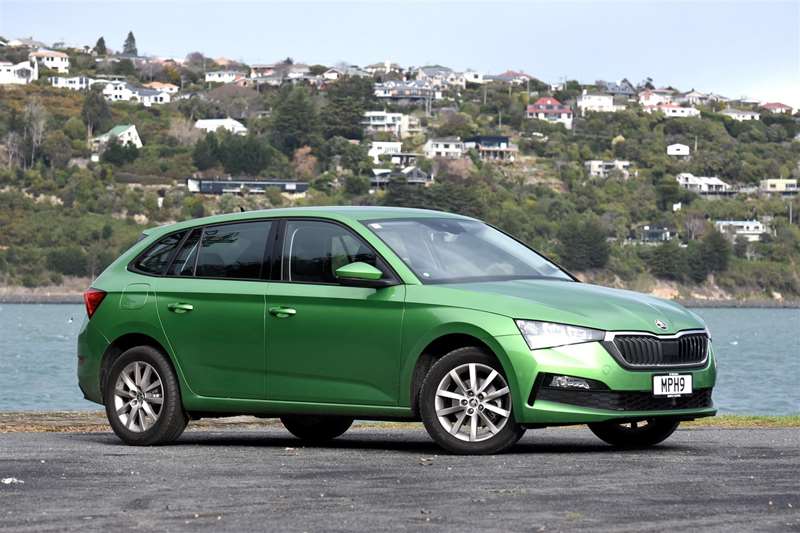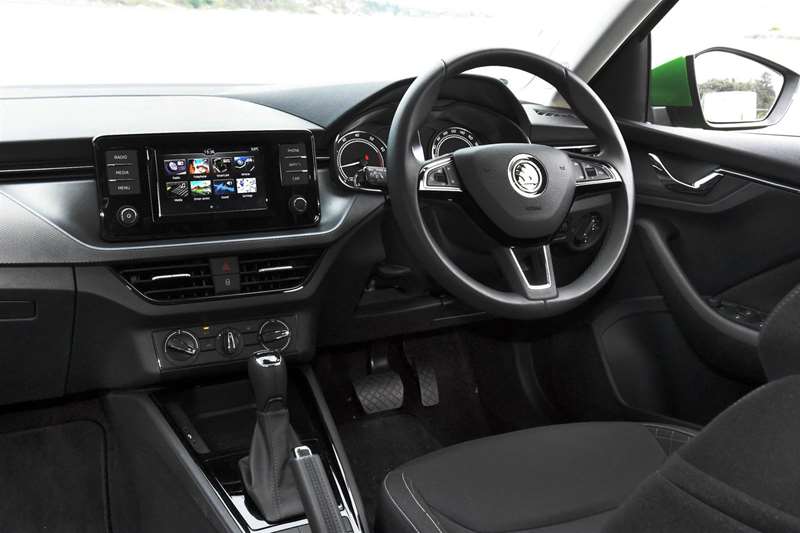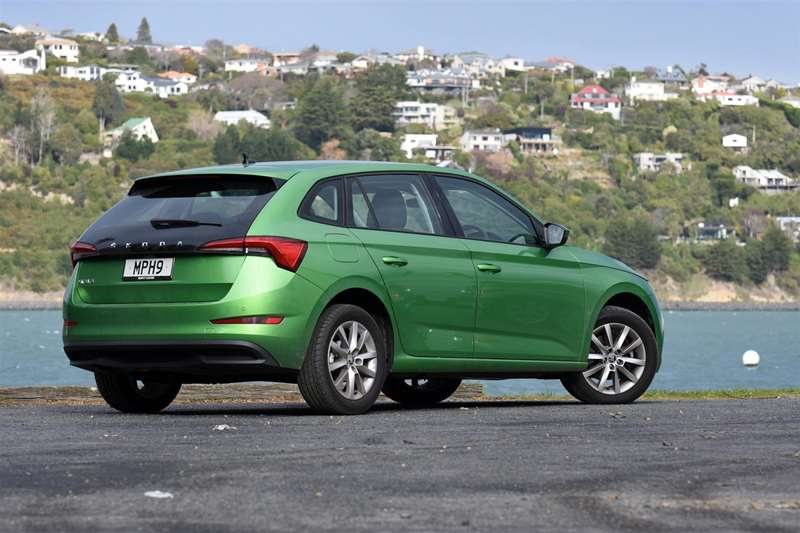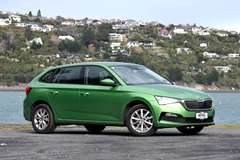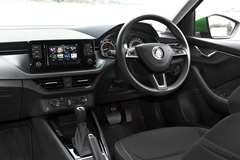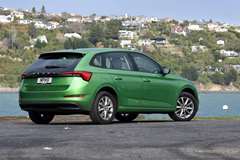Skoda’s new Corolla-sized hatchback, the Scala, has been out and about on Kiwi roads since the end of last year. DavidThomson finally gets behind the wheel.
What’s new?
Skoda’s rise from the fringes to the mainstream has been one of the features of the new-car market for more than a decade now. So, when the Czech-originated, Volkswagen Auto Group-owned brand launched the Scala here, rivals certainly took notice.
Replacing the Rapid as the second rung on the Skoda ladder, the new machine actually takes is name from that very same thing, Scala being the Latin word for a ladder.
The Scala utilises the VW Group’s now ubiquitous MQB platform. However, unlike the latest VW Golf, it is built around an extended version of the super-mini version of that platform rather than the specific five-door hatchback version, and so is slightly longer and wider than both the Golf, and the old Rapid.
We see three models here, opening with the 1.0-litre turbo 85kW/200Nm Ambition TSI. Priced at $29,990, this entry-level model sits alongside a pair of 1.5-litre 110kW/250Nm turbo choices, the $34,990 Sport and $38,990 Style. All utilise a seven-speed DSG direct-shift automated manual transmission to drive the front wheels.
The entry level 1.0-litre Ambition is the subject of this test.
What comes as standard?
The Ambition TSI, has a 6.5-inch centre touchscreen, eight-speaker sound system, Android Auto and Apple CarPlay smartphone integration as standard, along with Bluetoooth and USB Type-C connectivity. Cruise control, rain-sensing wipers and automatic lights, rear parking sensors, and heated power-adjusting mirrors are also provisioned, along with a safety package that includes lane-keeping assistance and a driver fatigue monitoring and alert system.
Along with the more powerful engine and associated drive-mode selection, the Sport TSI adds 17-inch rather than 16-inch alloys, sports seats and trim, a sports steering wheel and alloy pedals. The flagship Style TSI picks up 18-inch alloys, keyless entry, adaptive suspension, full adaptive radar cruise control, dual-zone climate control, a larger eight-inch centre touchscreen, adaptive headlights and front parking sensors. Rear traffic alert with side assist is an option across the
range, as is a panoramic sunroof.
What’s it like to look at?
One of the consistent elements in Skoda’s most recent push for mainstream sales success has been a focus on cleanly conservative styling. The Scala stays true to this recipe.
Fitting LED head and side lights is a nice visual touch, and helps give poise to a nose that centres on the current iteration of Skoda’s black chrome-rimmed grille. A distinctive and gently rising crease line along the Scala’s flanks helps deliver a solid look in front three-quarter and full side profile.
Two most intriguing aspects of the Scala’s exterior are found at its rear.
One of these is a tailgate glass section than extends between the tail lights to just above the number plate.
The other is the replacement of the traditional Skoda badge with the name Skoda writ large in chrome letters across the tail.
Another neat design trick is the distinctive shape formed by the illuminated LEDs. It’s the form of an ice hockey stick, which is a little homage to the central role of that sport in Czech life.
What’s it like inside?
Viewed in side profile, the Scala reveals proportions that are more wagoneseque than conventional hatchback.
This, along with the specific choice of MBQ platform, pays huge dividends when it comes to interior space.
Starting at the rear, the boot provides an exceptional 467-litre luggage capacity with the rear seats raised. The space is usefully wide and square too. It can be extended to more than 1400 litres when the rear seats are folded forward, albeit without the seats folding sufficiently to provide a fully flat extended floor.
The back seats are generous too; even with the drivers’ seat positioned for my 183cm (6ft) frame, there was sufficient space for an adult of the same height to sit without their knees touching the front seat back. There is also plenty of space to tuck your feet under the front seat, ample head room and decent shoulder space too, the width better suited to two not three adults.
Up front, the driver and adjacent passenger are well served for headroom, and occupants are accommodated in comfortable, supportive seats. Soft-touch materials are a welcome feature across the top of the dash but, unsurprisingly given its price point, hard plastics are the norm for other key surfaces.
Slender front pillars help deliver excellent forward vision from the driver’s seat, and the Scala outscores most of its rivals for over-the-shoulder visibility, too.
Storage spaces are generous, and include decent door pockets, a reasonable glovebox, a large drawer under the front seats, a small cubby in front of the gear lever (housing two USB ports), a lidded centre bin and twin cupholders to the left of the handbrake.
Flanked by its controlling buttons and knobs, the centre touchscreen is small, but crystal clear. The sound system, incidentally, is excellent for a sub-$30,000 car.
What’s it like to drive?
On paper, a diminutive 1.0-litre, three-cylinder engine is hardly something to raise the pulse, even when turbocharged. In practice though, this absolute cracker of a motor defines the entry-level Scala’s dynamic character in the best possible way.
Producing 200Nm of peak torque from just 2000rpm, it is responsive from low down, but also eager and capable when revved harder. Effortless and quite refined around town, it has sufficient pep for confident open-road overtaking, feels a little quicker than its 0-100kmh time of 8.1 seconds might suggest, and gives a nice sporty growl at the upper end of the rev range.
The seven-speed DSG gearbox also contributes positively to the driving experience, shifting smoothly when left to its own automated devices, but also pleasant enough when manual mode is engaged.
Best of all, plenty of pep is combined with decent economy; I returned 5.8 litres/100km on a test that included a fair proportion of spirited open-road driving, while the Scala’s standard cycle figure is 5.3 litres/100km.
Road and wind noise are, though, only adequately contained, with the former especially evident traversing coarse-chip surfaces. Ride quality is very good around town, but the test car did lose some of it dynamic composure traversing uneven and poorly surfaced tarmac at speed. This was especially evident at the rear of the car, where a torsion beam rather than a fully independent rear suspension set up is used.
Some body roll is evident when the Scala is pressed to corner quickly, but its handling is assured, responsive and utterly fuss-free. Front-end grip is especially tenacious, and this compensates in large measure for a steering set-up that enthusiasts will likely find to be a tad light and lacking in feel.
Among the various driver-assistance systems fitted, the cruise control takes a little getting used to as the buttons are tucked away behind the wheel on a small stalk. A couple of times, the steering assistance system instructed me to put my hands back on the steering wheel when that was exactly where they were.
Verdict
Collecting the Scala for this appraisal, expectations were of a pleasant, but likely not hugely memorable time with a competent car. Competent the Scala certainty is, but it combines that competence with some welcome sparkle, especially in regard to its generous interior packaging and the abilities of its engine.
